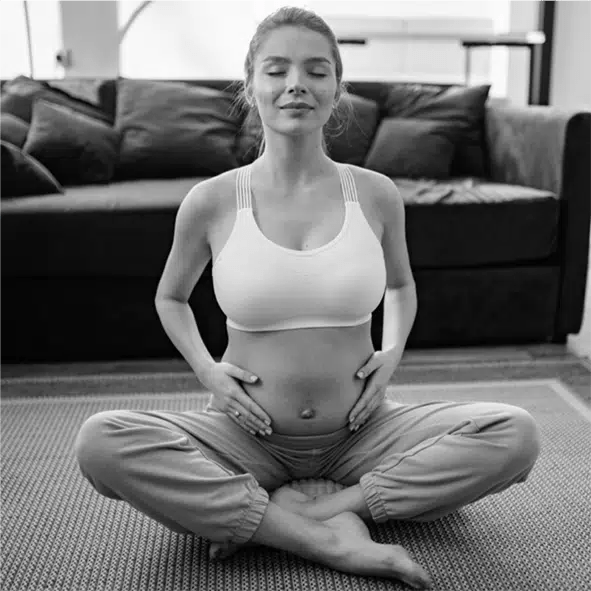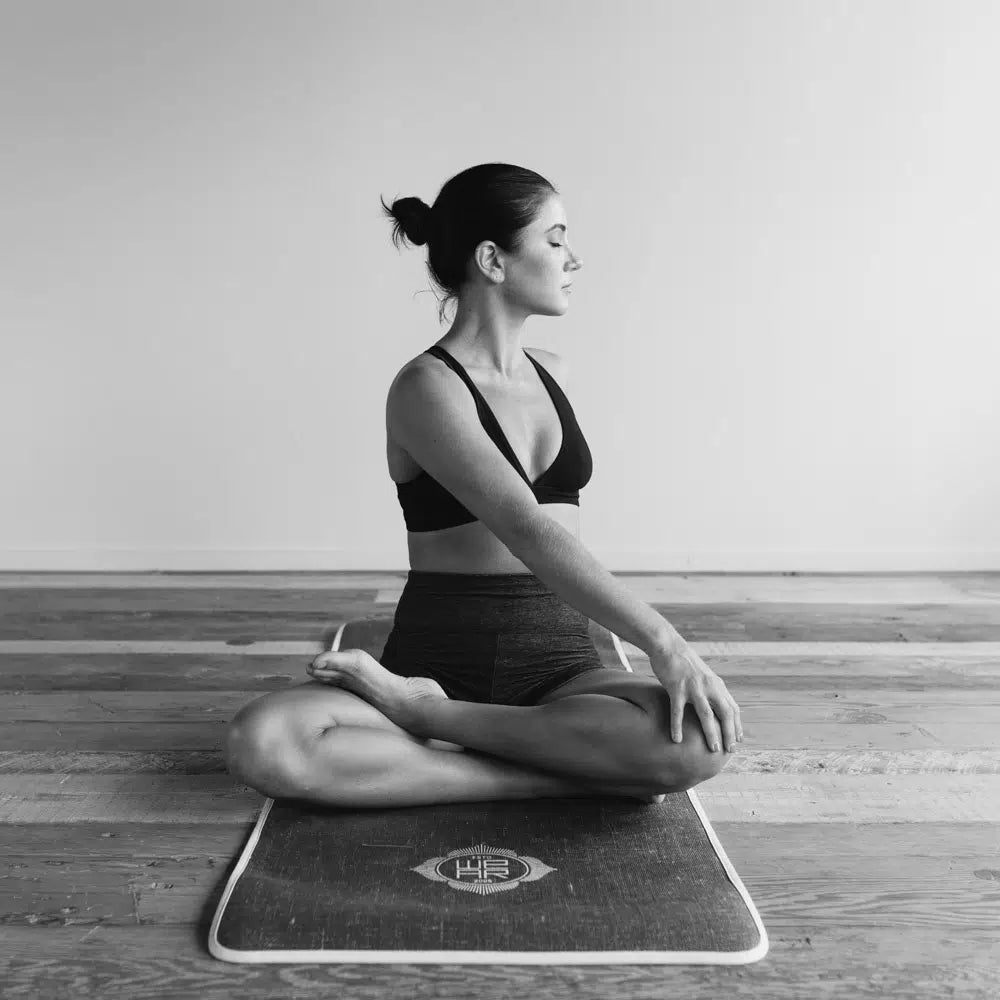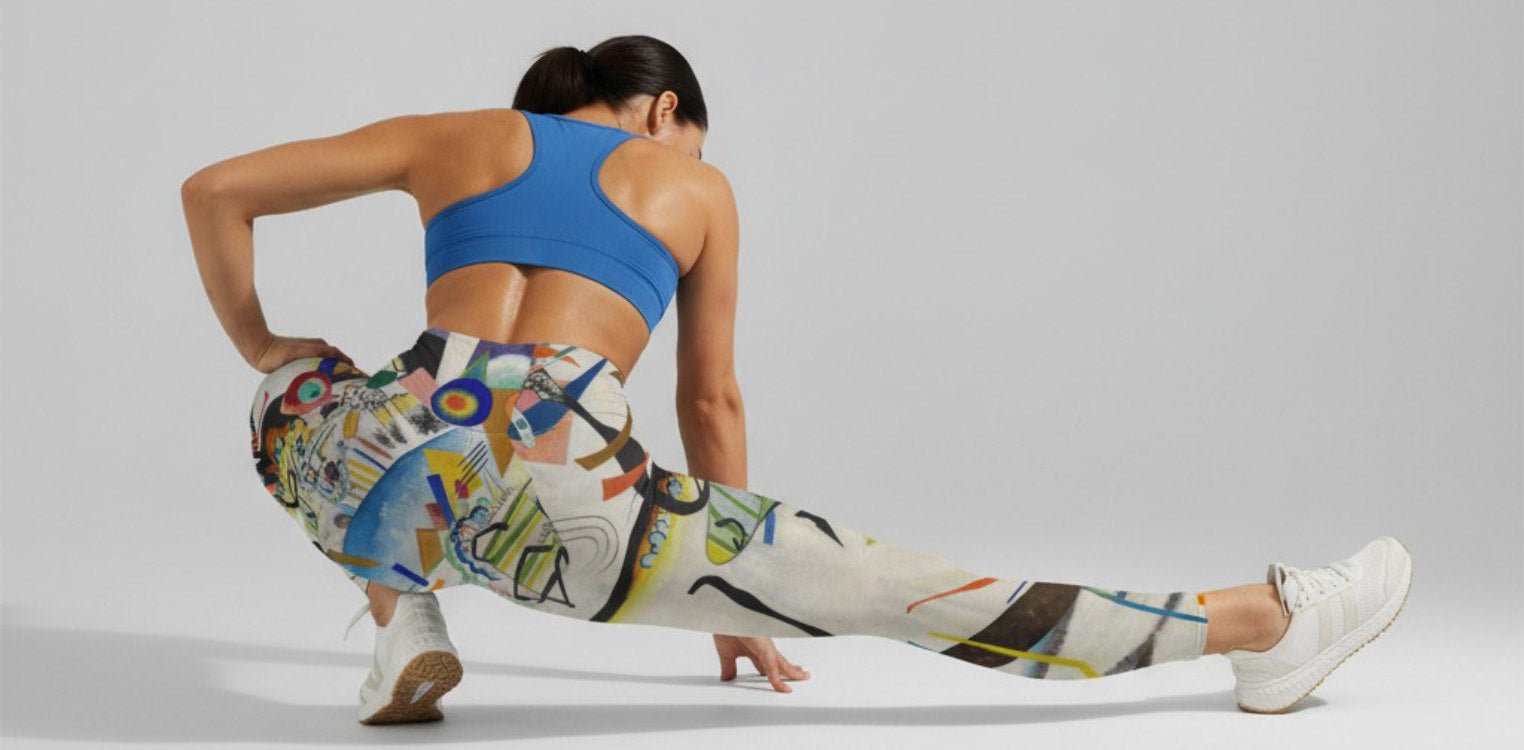First of all, let me tell you that yoga is much more than just performing certain positions. In fact, it is about a healthy lifestyle in which you balance your body and mind. Before starting yoga, it is therefore wise to determine what you want to achieve with it. For instance, do you want more relaxation, become more limber or build up more strength? By having a clear goal in mind, you can start practising yoga in a more focused way.
What is yoga?
In addition, it is important to know that there are different types of yoga. Each kind has its own characteristics and focuses on different aspects of yoga. For instance, Hatha yoga is a gentle form of yoga, while Power yoga focuses more on building strength and stamina. Therefore, study the different types of yoga well before you start. That way, you can make a choice that suits you best.
The history of yoga
Now first a little history of Yoga. Exactly how Yoga originated is still not entirely clear. What we can say is that Yoga is centuries old and dates back to the Far East, namely India. The first known Yogi was a philosopher from India called Patanjali. Drawing wisdom from Hinduism, he wrote down his guidelines for life in the Yoga Sutras some 200 years AD. However, we owe the modern version of Yoga to two other individuals. For instance, Swami Sivananda founded many Yoga schools in India, after which Parahamsa Yogandanda made the philosophy known all over the world. He did this through his book Autobiography of a Yogi. He also opened the first Yoga school in California. In the Netherlands, however, Yoga only made its entry much later, namely in the early twentieth century. Thus, the first Yoga school opened in Amsterdam on the prinsengracht in 1922.
What styles of yoga are there?
There are many different styles of yoga. For instance, one style is mainly meditative, another is more active, and there are also more energetic styles. The intensity of the different styles also differs. To create a little more clarity, I will now briefly explain each of the most popular styles of yoga in the Netherlands.
Hatha Yoga
We start with Hatha Yoga and there is a reason for that. After all, this is the style of yoga most commonly practised in the Netherlands. This style of yoga is also often seen as the basis. Hatha Yoga involves both physical exercises and breathing exercises. The physical exercises are both static and dynamic. You could see Hatha Yoga as the best form to get acquainted with what Yoga has to offer.
Ashtanga Yoga
Unlike Hatha Yoga, Ashtanga Yoga does not use separate exercises. With this style of yoga, you always do a set series of exercises that flow into each other. With Ashtanga Yoga, you deal with 8 different disciplines, namely; virtue, purity, asanas (yoga exercises/postures), breathing, concentration, meditation and control of the senses. Despite Ashtanga Yoga encompassing many different aspects, it is recommended not to start with this style of yoga. The reason is that this form of yoga is really a lifestyle and thus encompasses much more than just exercises.
Power Yoga
Power Yoga is derived from Ashtanga Yoga and is a very powerful and dynamic style of yoga. With Power Yoga, you perform different postures one after the other and support them with breathing techniques. If you are looking for a style of yoga that comes closest to a serious work-out, this style is definitely for you!
Vinyasa Yoga
Another widely practised style of yoga is Vinyasa Yoga and is also called 'Flow yoga'. It is a dynamic form of Yoga combined with breathing exercises. With this style of yoga, you do "a flow" of yoga postures on the movement of your breathing. When you go to a Vinyasa Yoga class, you can expect an intense class. Vinyasa Yoga therefore falls under the active styles of yoga.
Slow Flow Yoga
Slow flow Yoga has the same principle as Vinyasa Yoga however, the pace in Slow flow Yoga is a lot slower. In Slow flow Yoga, the poses are held longer and the transitions are just a bit slower. This style of yoga is an option for both beginning and advanced yogis.
Yin Yoga
Yin Yoga is a style of yoga in which postures are held for longer periods of time. Its purpose is to strengthen and loosen tendons, connective tissues and joints. This ensures improved mobility and strength of joints. To maximise the effect of Yin Yoga, you should actually combine this style of yoga with a yang yoga form, such as; Power Yoga or Hatha Yoga.
Also read our blog on: 'What is the best yoga legging for Yin Yoga' or 'Why Yin yoga is good for you‘
Restorative Yoga
If you are looking for a slightly calmer and more relaxed style of yoga, Restorative Yoga might be for you. This style of yoga is partly comparable to Yin Yoga, however, the focus is even more on relaxation. Restorative Yoga falls under the meditative yoga styles and is suitable for everyone.
Hot Yoga
Yoga in a room where it is a whopping 40 degrees centigrade - that is Hot Yoga. Now you might be thinking; why should I do this? I will now explain that to you briefly. The heat brings a number of benefits, such as increasing blood flow to the muscles resulting in more supple muscles. In addition, the heat increases your heart rate and metabolic rate which makes you burn more calories. Who wouldn't want that?
Bikram Yoga
Bikram Yoga is a form of Hot Yoga, again heating the room to around 40 degrees celcius. In this way, it mimics the climate of India. Bikram Yoga is hugely intensive style of yoga in which the same series of as many as 26 yoga postures are performed dynamically twice. Proportionally, many men practise this style of yoga, because for them the physical aspect of yoga is often just a bit more important than for women.
Yoga Nidra
Yoga Nidra is the very quietest form of Yoga where you get into the deepest possible relaxation. No postures or meditations are performed during these classes. Both physically and mentally you are put into a kind of sleep, which is why Yoga Nidra is often performed in a lying position.
Yoga's positive effects on our body and mind
Now that you (hopefully) understand the basics of Yoga, it's time for the benefits of Yoga. As some of you may already know, Yoga has many benefits, but what exactly are these benefits? We're going to tell you that now! We will do this through a list in which we highlighted 8 great benefits of Yoga.
Yoga has a positive impact on you:
- Stress level
- Immune system
- Energy level
- Night's rest
- Flexibility
- Sexual experiences
- Concentration
- Pain complaints
This also answers the question: What effect does Yoga have on our body and mind? When you read this, you actually want to start Yoga right away... Who wouldn't want to benefit from all these advantages of Yoga! But now you might still be wondering, how is it possible that Yoga has so many positive effects? This is due to several factors. For instance, according to several studies, Yoga lowers the amount of stress hormones, cholesterol and inflammatory substances in our blood. In addition, the method of breathing in Yoga can make the amount of carbon dioxide in the blood and blood flow to the brain increase. This results in more oxygen in the brain which creates the so-called "fierce awareness". This is an effect that people with stress and other complaints will really experience positive effects from.
Will yoga give you a more beautiful body?
Now you might still be wondering: does yoga give you a nice, tighter and toned body? This question is difficult to answer. Here's the thing: because yoga slows down breathing, the heart rate drops and so does blood pressure (except for the intensive forms of yoga). As a result, the body uses less energy which means it needs fewer calories. In theory, this means you would gain weight compared to if you didn't do Yoga. Assuming you would eat the same.
Now you must be wondering why do I hardly ever see fat yogis? This can be explained by the fact that yoga has a positive impact on the production of the stress hormone cortisol. By lowering for cortisol, less belly fat will be stored resulting in a more beautiful, toned and muscular body.
Yoga also has a positive impact on many people's eating habits. For instance, yogis are often more aware of what they eat and what is and is not healthy for them. Again, this contributes to a nicer tighter and more muscular body.
Now you know what Yoga is, the different styles of yoga and the effects of Yoga on our body and mind. Now one question still rests, what materials are all needed to start Yoga?
Which materials you need all depends on whether you want to practice yoga at home or at a yoga school. For now, we will assume that you want to do it at home. This will give you a complete picture of what materials are needed to start practising Yoga.
- Yoga mat
- Yoga buck
- Blanket
- Yoga belt
- Bolster (Yoga pillow)
- Meditation cushion
- Yoga towel
- Eye pillow
- Clothing
With all these materials, it depends on the Yoga style which materials are needed. There are also many differences in Yoga mats and clothing, for example. To help you choose the right pair of Yoga Leggings that fits you perfectly, we have written an article. You will find this article here .
Finally, it is important to listen carefully to your body while practising yoga. For example, do you feel pain or tension in certain areas of your body? Then stop the exercise and take your time to recover. By listening carefully to your body, you can prevent injuries and practice yoga safely.
Luijk, M. (2017, 5 March). Why everyone needs Yin Yoga. Accessed on 12 December 2020, from https://gezondheidscentrumlisse.nl/yoga-nieuws/waarom-iedereen-yin-yoga- need-have/
M. (2015, 21 March). What is Ashtanga Yoga anyway? Accessed 12 December 2020, from https://www.happywithyoga.com/yoga/wat-is-ashtanga-yoga/
namonamah. (2013, March 17). Yoga history. Consulted on 2 December 2020, from https://www.namonamah.nl/yoga/
Pek, A. (1970, August 22). What yoga does in your brain. Accessed 2 December 2020, from https://www.psychologiemagazine.nl/artikel/wat-yoga-doet-in-je-brein/
Peverelli, H. (2020, 23 November). This is what science says about yoga: 7 facts and myths ⋆. Accessed December 1, 2020, from https://www.yogaonline.nl/blog/wetenschap-over- yoga/
Stet, A. (2020, 25 August). The different types of yoga and their benefits. Consulted on 2 December 2020, from https://www.womenshealthmag.com/nl/trainen/yoga/a26882431/de- verschillende-soorten-yoga-en-de-voordelen-ervan/











